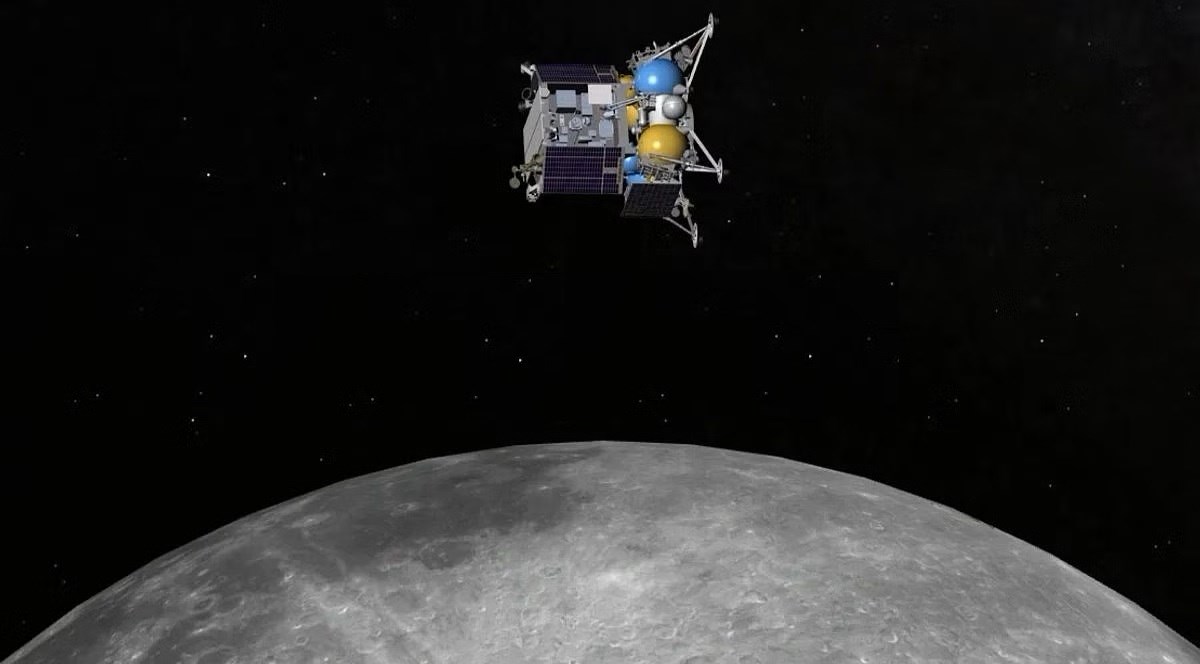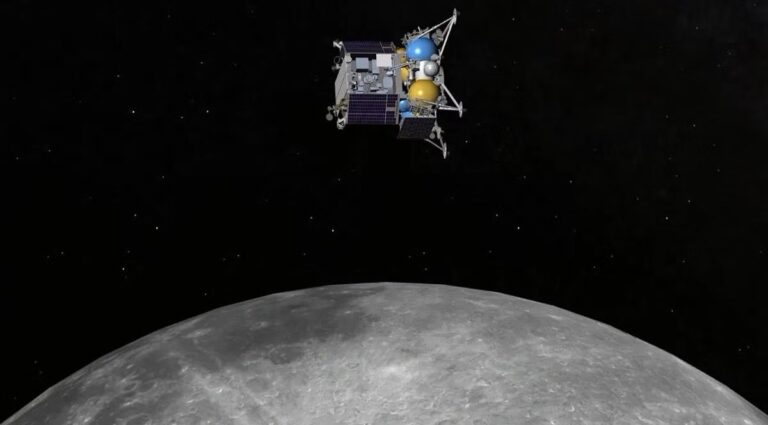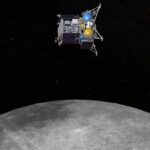Introduction
On a fateful mission to explore the moon, Russia’s Luna-25 spacecraft recently made headlines for an unexpected reason: it crashed into the lunar surface. This surprising turn of events has sparked widespread interest and raised questions about what went wrong. In this article, we will delve into the details of Russia’s Luna-25 mission, explore the causes behind the crash, and discuss the significance of this event.
The Luna-25 mission was part of Russia’s ambitious space program aimed at furthering our understanding of the moon and its potential resources. However, instead of a successful landing, the spacecraft met an untimely end by crashing into the lunar terrain. This incident has piqued public curiosity and left experts scrambling for answers.
The crash of the Luna-25 spacecraft is significant due to its implications for Russia’s space exploration endeavors and the broader field of lunar exploration. It raises important questions about the challenges faced in such missions and highlights the need for further investigation and improvement in future lunar missions. Join us as we unravel the mysteries surrounding this unfortunate event and shed light on what may have gone wrong during Russia’s lunar expedition.
Background of Russia’s Moon Mission
Russia has a long and storied history in space exploration, including its ambitions to reach the moon. The Luna-25 mission, which unfortunately ended in a crash, is just one chapter in that journey. Let’s delve into the background of Russia’s moon mission and understand the context surrounding it.
Historical Context of Russia’s Space Program and Lunar Ambitions
Russia’s space program dates back to the early days of the Space Age. In fact, the Soviet Union was the first country to successfully launch a satellite, Sputnik 1, into orbit in 1957. This achievement sparked a fierce competition between the United States and the Soviet Union known as the “moon race.” Both nations sought to be the first to land humans on the moon.
The Moon Race Era
During the moon race era, which spanned from the late 1950s to the early 1970s, Russia made significant strides in lunar exploration. They successfully launched a series of Luna missions that aimed to study the moon’s surface and even retrieve samples for analysis. These missions provided valuable insights into lunar geology and laid the groundwork for future lunar expeditions.
Post-Soviet Decline and Resurgence of the Russian Space Program
However, after the collapse of the Soviet Union in 1991, Russia’s space program faced significant challenges. Funding shortages and a lack of resources led to a decline in their capabilities. The focus shifted away from ambitious lunar missions towards more practical endeavors like satellite launches and manned spaceflight to the International Space Station.
In recent years, though, there has been a resurgence in Russia’s interest in lunar exploration. The Luna-25 mission was part of this renewed effort to return to our celestial neighbor. By landing on the moon’s south pole, Russia hoped to gather vital data about its composition and potential resources.
Despite setbacks like the crash of Luna-25, Russia’s space program remains determined to push forward and contribute to humanity’s understanding of the moon and beyond. Their dedication to exploration and scientific discovery will undoubtedly shape the future of space exploration.
Stay tuned as we delve deeper into the mission objectives of India’s lunar mission, Chandrayaan-3, and compare it to Russia’s Luna-25 in the next section.
Chandrayaan-3: India’s Lunar Mission
India’s space agency, the Indian Space Research Organisation (ISRO), is gearing up for an ambitious lunar mission with the Chandrayaan-3 spacecraft. This mission is set to follow the footsteps of its predecessor, Chandrayaan-2, which unfortunately faced a setback during its landing attempt in 2019.
The primary objective of Chandrayaan-3 is to further explore the moon’s surface and gather valuable scientific data. Like Russia’s Luna-25 mission, India aims to study the moon’s south pole region, which is believed to harbor water ice and hold significant insights into the moon’s geological history.
While both missions share a common goal of lunar exploration, there are notable differences between Chandrayaan-3 and Luna-25. One key distinction lies in their approach to landing on the moon. Chandrayaan-3 will utilize a soft landing technique similar to that of its predecessor, whereas Luna-25 opted for a crash landing.
Despite these differences, it is worth noting that there is room for collaboration and competition between Russia and India in the realm of space exploration. Both nations have expressed interest in working together on future lunar missions, potentially pooling resources and expertise to achieve even greater scientific breakthroughs.
The Chandrayaan-3 mission represents India’s commitment to advancing its space program and further establishing itself as a prominent player in space exploration. As the world eagerly awaits the outcome of this mission, it is clear that the race to unlock the mysteries of the moon continues with renewed vigor.
The Luna-25 Crash: Investigation and Causes
The unexpected crash of Russia’s Luna-25 spacecraft into the moon has sparked a flurry of investigation and speculation. Experts are tirelessly working to uncover the causes behind this unfortunate incident, which has left the space community and the public eagerly awaiting answers. Let’s delve into the ongoing investigation and explore the factors that may have contributed to the crash.
Ongoing Investigation
The crash of Luna-25 has prompted an immediate and thorough investigation by Russian space agency officials. They are meticulously analyzing every piece of data to ascertain what went wrong during the mission. An international team of experts has also been called upon to lend their expertise in unraveling the mystery behind this unprecedented event.
Pre-Landing Manoeuvres and Challenges Faced
The pre-landing manoeuvres undertaken by Luna-25 were vital for a successful landing on the moon’s surface. However, these manoeuvres posed numerous challenges that the spacecraft had to overcome. The delicate dance between deceleration, navigation, and precision required a seamless execution, leaving no room for error.
Exploring Technical Problems or Malfunctions
As part of the investigation, attention is being focused on any technical problems or malfunctions that may have played a role in the crash. The complex systems onboard Luna-25 are being meticulously examined to identify any anomalies or failures that could have led to this unfortunate outcome.
It is crucial for scientists and engineers to identify these potential issues in order to prevent similar incidents in future missions and ensure the safety and success of upcoming lunar exploration endeavors.
The investigation into the Luna-25 crash is ongoing, with experts working tirelessly to uncover its causes. As more information becomes available, we hope to gain a clearer understanding of what transpired during this mission’s ill-fated descent. Stay tuned for further updates as we continue our exploration into Russia’s lunar ambitions.
Exploring the Moon’s South Pole
The moon’s south pole has become a focal point for space exploration in recent years, and for good reason. Scientists and researchers are increasingly drawn to this region due to its scientific importance and the potential discoveries it holds. Here, we delve into the significance of exploring the moon’s south pole, the presence of frozen water, the search for precious elements and resources, and the role of Zeeman crater in lunar exploration.
Scientific Importance
Exploring the moon’s south pole offers a unique opportunity to unravel the mysteries of our celestial neighbor. This region is believed to contain valuable scientific data that can shed light on the moon’s geological evolution, as well as provide insights into the early history of our solar system.
By studying the south pole, scientists hope to gain a better understanding of lunar geology, including its composition, structure, and formation processes. This knowledge can help in deciphering how other rocky bodies, such as planets and asteroids, have evolved over time.
Presence of Frozen Water
One of the most exciting discoveries related to the moon’s south pole is the presence of frozen water. Recent missions and observations have provided strong evidence that water ice exists within permanently shadowed craters at this location.
The existence of water on the moon opens up possibilities for future human exploration and even colonization. Water can be used for drinking, growing plants, generating oxygen, and producing rocket fuel. By utilizing local resources like water ice, future lunar missions can become more sustainable and cost-effective.
Search for Precious Elements and Resources
In addition to water ice, exploring the moon’s south pole also presents an opportunity to search for precious elements and potential resources. The lunar regolith (surface material) contains valuable minerals such as helium-3, platinum group metals, rare earth elements, and even traces of gold.
These resources could be utilized in various industries on Earth or even in space. For example, helium-3 is an isotope that could potentially be used as fuel for future fusion reactors, providing a clean and abundant source of energy.
Significance of Zeeman Crater
Among the many craters at the moon’s south pole, Zeeman crater stands out as a particularly intriguing feature. This crater is interesting to scientists because it is thought to have been formed by a relatively recent impact event, potentially exposing material from deeper layers of the moon’s crust.
By studying Zeeman crater and analyzing the exposed material, scientists can gain valuable insights into the moon’s geological history and its internal composition. This information can help in piecing together the puzzle of how the moon formed and evolved over billions of years.
In conclusion, exploring the moon’s south pole holds immense scientific importance. The discovery of frozen water, along with the search for precious elements and resources, opens up new possibilities for future human missions and lunar colonization. Additionally, studying craters like Zeeman crater provides valuable data about the moon’s geology and evolution. As space agencies continue to focus on lunar exploration, we can expect further excitement and groundbreaking discoveries from this fascinating region.
Russia’s Space Exploration Future
Russia’s space exploration plans have faced a setback with the unexpected crash of the Luna-25 spacecraft into the moon. This failure raises questions about the country’s ability to achieve its lunar objectives and the future of its space program.
The Russian space agency, Roscosmos, has launched an investigation into the Luna-25 crash to determine the causes and prevent similar incidents in future missions. The response from the agency has been swift, acknowledging the failure and committing to learn from it. This incident highlights the challenges and risks inherent in space exploration, even for experienced nations like Russia.
Despite this setback, Russia remains committed to advancing its space program and exploring the moon. The Luna-25 mission was just one part of their broader lunar ambitions. Roscosmos has already announced plans for future missions that will build upon their previous successes and address the shortcomings highlighted by the Luna-25 crash.
One such mission is Luna-26, which aims to study the moon’s south pole region further. By learning from the failures of Luna-25, this upcoming mission will incorporate improved technologies and strategies to ensure a successful landing and scientific exploration.
Additionally, Russia is actively exploring collaborations with other nations to enhance its space capabilities. Cooperation with international partners can bring together expertise, resources, and funding to overcome challenges and achieve mutual goals.
The Luna-25 crash should not overshadow Russia’s significant contributions to space exploration over the years. The country has a rich history in space achievements and continues to make strides in various aspects of cosmic research. As technology advances and lessons are learned from past failures, it is likely that Russia will continue to play a vital role in shaping our understanding of outer space.
In conclusion, while the Luna-25 crash presents a temporary setback for Russia’s space exploration plans, it is important to recognize that failures are an inherent part of any ambitious endeavor. The Russian space agency’s response demonstrates their commitment to learning from these failures and moving forward. With future missions in the pipeline and potential collaborations on the horizon, Russia’s space exploration future remains promising.
Conclusion
In this article, we explored the unexpected crash of Russia’s Luna-25 spacecraft into the moon and discussed its implications for lunar missions.
Throughout the article, we delved into the background of Russia’s moon mission, highlighting the historical context of their space program and lunar ambitions. We also compared and contrasted Russia’s Luna-25 mission with India’s Chandrayaan-3, shedding light on any collaborations or competition between the two nations.
We then investigated the causes of the Luna-25 crash, discussing the ongoing investigation and exploring potential technical problems or malfunctions that may have contributed to the accident.
Furthermore, we emphasized the scientific importance of exploring the moon’s south pole, particularly in regard to frozen water and potential resources. We also touched upon the significance of Zeeman crater in lunar exploration.
Considering the impact of the Luna-25 crash on Russia’s space exploration plans, we examined how it may affect future missions and advancements in their space program. We also discussed the response from the Russian space agency.
Reflecting on these points, it is clear that while setbacks like the Luna-25 crash can be disheartening, they are an inherent part of exploring unknown frontiers. Failure is a stepping stone towards progress and innovation. As we move forward, it is crucial to learn from these experiences and improve our knowledge and technology.
In conclusion, despite this setback, our collective interest in lunar missions remains unwavering. The crash of Luna-25 serves as a reminder of both the challenges and opportunities that lie ahead in our quest to explore and understand our celestial neighbor. With continued determination and advancements in space technology, we will surely witness more successful moon landings in the future.
Remember, as Neil Armstrong once said, “That’s one small step for man, one giant leap for mankind.” Let us continue taking those steps towards unlocking the mysteries of the cosmos.









+ There are no comments
Add yours